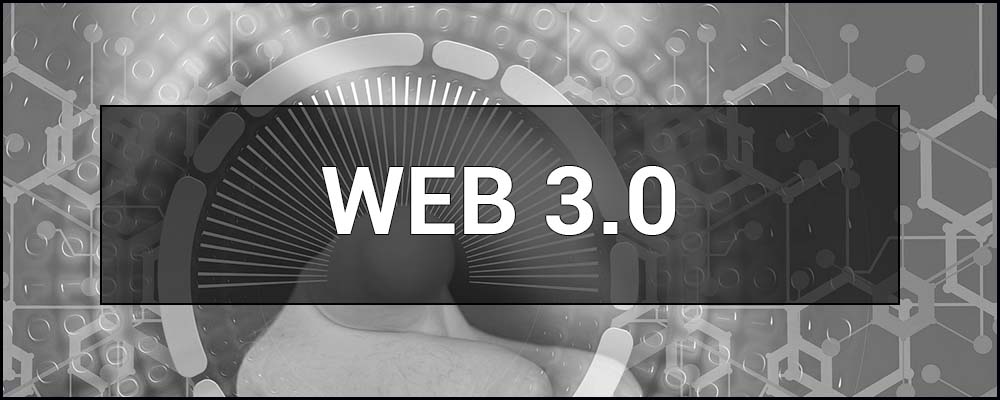Web3 (Web 3.0 or decentralized Internet) is the next stage of Internet development that provides decentralization, security, and transparency in the relationship between users, developers, and platforms.
What is Web3 – concepts and definitions in simple words.
In simple terms, Web3 (Web 3.0) is a new stage of Internet development that opens the door to a more democratic, secure and user-centered Internet space. It is an updated version of the Internet that provides direct communication between users, without the need for third parties, such as large companies or government agencies.
The basis of Web3 is blockchain technology, which allows data to be stored in a secure, distributed network where each participant has the same rights and opportunities. Through the use of smart contracts, users can interact with each other directly, quickly and transparently, and create innovative applications and services. In the Web3 world, you can earn cryptocurrency, manage your digital assets, trade tokens (NFTs), and use a variety of decentralized services, including those in finance, insurance, education, and entertainment. Thus, Web 3.0 is a new chapter in the history of the Internet that gives users more freedom, control, and opportunities for development in the digital world.
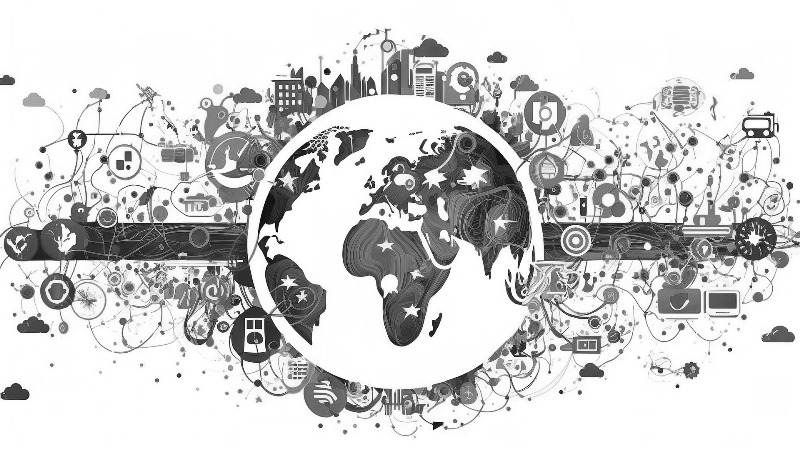
Internet evolution: from Web1 to Web3
The Internet has come a long way from its beginnings as Web1.0 to the current version of Web3.0. In this paragraph, we’ll look at the stages of Internet development and the practical differences between Web3 and Web2 that users may experience.
Web1.0: Static Internet.
Web1, also known as the static Internet, was the first stage of the Internet’s development. It was characterized by a predominantly unidirectional flow of information, where users could only view web pages created by developers. Web1 did not allow users to actively interact with content or create their own content.
Web2.0: Dynamic and Interactive Internet.
Web2, the next stage of the Internet’s evolution, brought significant changes. It allowed users to actively interact, communicate, and create their own content. Web2 includes platforms such as social networks, blogs, forums, wikis, etc. However, Web2 is based on centralized services that control user data and interaction.
Web3.0: Decentralized and Democratic Internet
Web3 represents the next step in the evolution of the Internet, which focuses on decentralization, security, and democracy. It uses technologies such as blockchain, smart contracts, and cryptocurrencies to create decentralized networks that do not require centralized control. Here are some of the practical differences between Web3 and Web2 that Internet users may experience:
- Control over data: In Web3, users have full control over their data and assets. They can decide with whom to share their information without interference from centralized organizations or intermediaries.
- Privacy: Web3 provides users with the ability to protect their privacy through the use of cryptographic protocols and decentralized identifiers.
- Financial interaction: Web3 allows users to directly interact with financial systems such as cryptocurrency wallets and decentralized exchanges without the need for intermediaries such as banks or payment systems.
- Decentralized applications (dApps): Web3 encourages the development of decentralized applications that run on blockchain networks and are independent of centralized servers. This allows users to interact with applications directly, providing a more secure and stable environment.
- Censorship resistance: Web3 provides a higher level of censorship resistance because content and data are distributed across multiple nodes in decentralized networks. This makes it difficult for centralized authorities to block or remove content.
- Collaboration and global participation: Web3 fosters global collaboration and participation by allowing users from different countries and cultures to work together on projects, share ideas and resources. This stimulates innovation and the development of decentralized communities.
- Token economy: Web3 introduces the concept of tokenization, which allows users to create and exchange digital assets based on the blockchain. Tokens can represent various values, such as currency, stocks, rewards, or digital art, providing new opportunities for earnings and investment.
- Decentralized management: Web3 promotes decentralized governance and decision-making by allowing community members to vote and make suggestions for the development of the platform or project. This approach strengthens democracy and responsibility in the digital environment.
In summary, the evolution of the Internet from Web1 to Web3 has gone from a static, centralized environment to a decentralized, secure, and democratic platform.
What are decentralized applications (dApps), smart contracts, and NFTs in Web 3.0?
- Decentralized applications (dApps) are programs that work on the basis of blockchain technology and are built on the principles of decentralization, lack of central control, and autonomy. They use smart contracts to automate interaction between participants and process transactions.
- NFT tokens are unique digital assets that represent virtual or physical objects and cannot be interchangeable on a 1:1 basis with any other asset. They are created on the basis of blockchain technology, which ensures their uniqueness and authenticity. NFTs are widely used in art, collectibles, gaming, and other areas to represent valuable and rare objects.
- Smart contracts are autonomous computer programs that automatically fulfill the terms of the contract between the parties without the need for intermediaries. They are hosted on blockchain platforms such as Ethereum and guarantee transparency, security, and consistency of transactions. Smart contracts can be used in various fields, including finance, insurance, real estate, and many others.
Real-world examples of decentralized applications (dApps) include:
- Uniswap is a popular decentralized cryptocurrency exchanger that allows users to exchange tokens without intermediaries and control from central institutions.
- MakerDAO is a platform for creating stable coins (e.g., DAI) that offers decentralized loans and credits based on the blockchain.
- CryptoKitties is a digital game that allows users to create, buy, sell, and breed unique virtual cats based on the network of tokens (NFT).
- Decentraland is a virtual world where users can buy, sell, and develop virtual plots of land, create 3D content, and interact with other participants based on blockchain technology.
- Aave is a financial platform that offers decentralized savings, loans, and staking services, allowing users to earn interest on their cryptocurrency deposits.
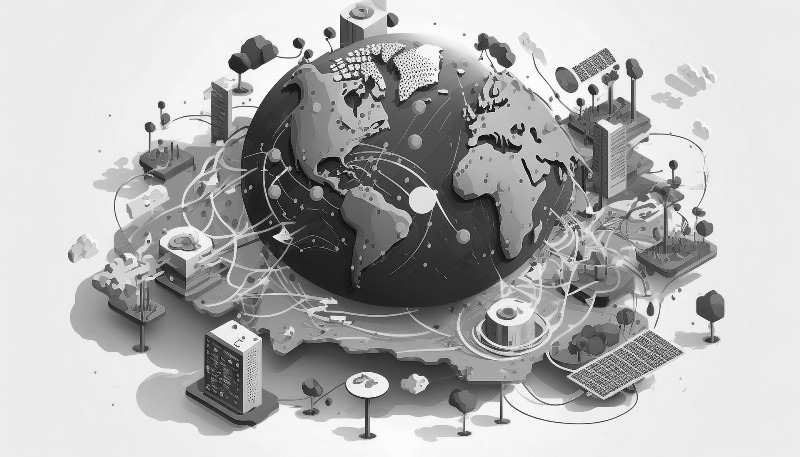
A new era of the Internet.
Web3 is described as a decentralized, trustless, and permissionless Internet. This means that users have the ability to interact directly with each other, without the need to trust third parties or obtain permission from centralized authorities.
The role of blockchain technology and smart contracts in Web3 is to support a decentralized infrastructure that allows data to be stored and transactions to be performed in a secure and transparent environment. Smart contracts automate processes and transactions between users, ensuring their execution without intermediaries and unnecessary costs.
Decentralized finance (DeFi) and non-fungible tokens (NFTs) are great examples of Web3’s capabilities. DeFi opens up access to financial services for all users, abandoning traditional banking systems. NFTs, in particular, are revolutionizing the ownership and exchange of digital assets by giving them uniqueness and proof of ownership on the blockchain.
Thus, Web3 is ushering in a new era of the Internet that provides users with more opportunities to interact in the digital world.
Decentralized finance (DeFi) is an ecosystem of financial applications and services built on blockchain technologies, including smart contracts. DeFi aims to provide access to financial services such as lending, insurance, derivatives, and currency exchange without traditional banking institutions or intermediaries. DeFi promotes global financial inclusion, transparency, and efficiency of operations.
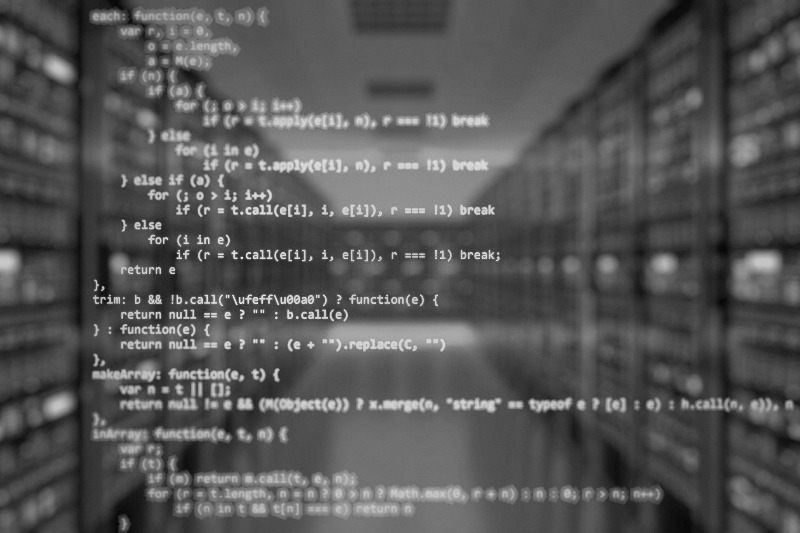
Web3 Technology Stack: The basic elements of the decentralized Internet.
The Web3 technology stack includes the key components that enable the construction of the decentralized Internet. The main elements of the stack include storage protocols, network protocols, and smart contract platforms.
Ethereum is the pioneering platform for decentralized applications (dApps) and the most popular among Web3 developers. It provides a universal environment for developing and implementing smart contracts and decentralized applications based on blockchain technology.
Besides Ethereum, there are other well-known platforms that also contribute to the development of Web3, such as Polkadot, Cardano, and Solana. Polkadot is distinguished by its unique approach to scaling and inter-blockchain interaction, Cardano offers a high level of security and decentralization, and Solana provides impressive transaction speeds and optimization for high-performance applications.
Together, these platforms form the Web3 technology stack, empowering developers and users to build and use the next generation of decentralized applications and services on the Internet.
Advantages of Web3 over Web2.
Web3.0 offers many advantages over the traditional Internet, including
- Increased security, privacy, and control over personal data: Web3 provides a greater level of security and privacy for users because they have control over their data and are not dependent on centralized organizations. This can reduce the risk of hacker attacks and data misuse.
- Democratizing the Internet and reducing dependence on centralized structures: Through decentralization, Web3 promotes a freer and more accessible Internet where users are not dependent on large technology companies or government organizations. This can ensure network resilience and protection against censorship.
Fostering creativity and stimulating innovation.
- Encouraging creators: Web3 creates the conditions for creativity and new initiatives by giving creators control over their works and revenues. For example, NFTs allow creators to monetize their digital assets and earn from their sales.
- Innovation: Web3 technology opens the door to the development of new applications, services, and business models that take advantage of decentralization to create better and more efficient solutions in various fields, including finance, insurance, real estate, and more.
In summary, Web3 offers many benefits that can improve the quality and security of online interactions, as well as contribute to the development of new industries and opportunities for users and creators. The implementation of Web3 can be done quickly, and its potential is already attracting the attention of the global community. It opens new horizons for innovation, collaboration, and the development of a global decentralized Internet.

Potential challenges and limitations of Web3.
Although Web 3.0 has great potential, there are some challenges and limitations that may hinder its development:
- Technical difficulties and training for developers: Developing decentralized applications and working with blockchain technologies can be challenging for developers, especially for those who are new to these technologies. Learning and adapting to new standards can take time.
- Scaling challenges and environmental impact of blockchain technologies: Scaling decentralized systems can be problematic, as most blockchains have limited bandwidth. In addition, some blockchain technologies, especially those that use the Proof of Work consensus algorithm, have a significant environmental impact due to their high energy consumption.
- Regulatory obstacles and potential resistance from existing market players: Governments and regulators may impose restrictions on the development and use of Web3, considering it a potential threat to national security or economic stability. At the same time, large tech companies may resist the change, as they would lose control over the market and user data.
Despite the aforementioned challenges and limitations, Web3 continues to evolve, and the developer and investor communities are actively working to address these issues by looking for alternative solutions and improving the technology. The introduction of new consensus algorithms, such as Proof of Stake, can reduce the environmental impact of blockchains, and new scaling methods, such as sharding, can help solve bandwidth issues.
In addition, sharing knowledge and skills among developers helps to grow the Web3 community, and regulators can take a stand on the side of innovation by promoting the development of these technologies and considering their potential benefits.
There will inevitably be obstacles and challenges along the way to creating a decentralized Internet, but with the combined efforts of developers, investors, regulators, and users, the opportunities that Web3 offers can become a reality, significantly changing the way we interact with the Internet.
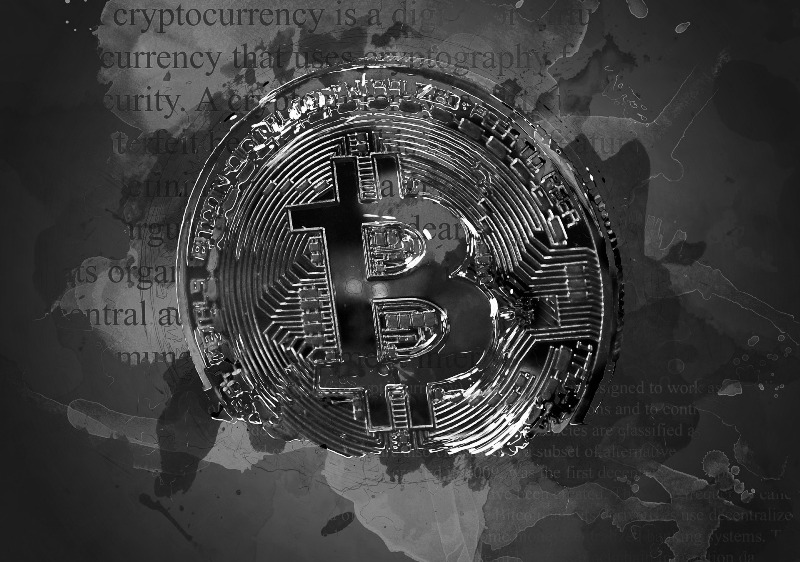
The future is bright: Directions for Web3 development.
- Development of decentralized finance (DeFi): Blockchain-based financial services can provide access to finance for billions of people who remain outside the traditional banking system.
- Growth of the non-fungible token (NFT) market: Digital art, virtual reality, and other digital assets have the potential to change the way we value and exchange creativity and intellectual property.
- Integration with the real world: Web3 can contribute to the development of the Internet of Things (IoT) by providing secure and reliable connections between devices and allowing them to interact without intermediaries.
Web3 and Artificial Intelligence: The symbiosis of the future.
The combination of Web3 and Artificial Intelligence (AI) can be a powerful driver of innovation in the digital world. The use of decentralized technologies together with AI can help solve key issues related to security and privacy on the Internet.
- Smart contracts and AI: Smart contracts, which are an important component of Web3, can interact with AI to provide automatic data processing and contractual fulfillment. This can help create autonomous, self-regulating systems that can adapt to changes in their environment.
- Decentralized machine learning: Web3 can facilitate the development of decentralized machine learning, where AI models are trained on data distributed across different nodes in the network. This can improve security and privacy by ensuring that users’ personal data is not centralized in one place.
- Global collaboration: Web3 and AI together can stimulate global collaboration between scientists, developers, and other stakeholders, facilitating the exchange of knowledge, resources, and ideas. This can lead to the creation of new, innovative solutions that can address global challenges in various industries.
- Openness and transparency: One of the key benefits of Web3 and AI is openness and transparency, which stimulates innovation and development. With the help of open source and decentralized networks, communities can work together to improve AI models, ensuring the wide availability of technology.
- Ethical issues and regulation: Integrating Web3 and AI also requires consideration of ethical and regulatory issues. Keeping privacy, security, and user rights at the forefront can be an important step toward building a responsible future for the Internet.
- Accessibility of digital environments: In order to ensure equality and accessibility, Web3 and AI should take into account the accessibility of digital environments. Developing inclusive platforms and fostering global collaboration can help ensure that technologies are accessible to a wide range of users.
As a result, the collaboration between Web3 and AI opens up new horizons for the development of technologies that could revolutionize the Internet. Through this symbiosis, users can gain better control over their data and ensure a more sustainable and equitable development of Internet technologies.

Engaging in Web3.0
In order to contribute to the creation of a decentralized Internet, developers, businesses, and ordinary users should actively participate in the development of Web3. This means learning about new technologies, developing and deploying decentralized applications (dApps), and supporting initiatives that advance Web3.
- Collaboration and openness: Collaboration between different platforms, projects, and stakeholders can help to foster wider adoption of Web3 technologies. Open standards, transparency, and interoperability are key to the success of the future decentralized network.
- Education and awareness: Informing users and developers about the benefits of Web3, educating them about the technical aspects of blockchain and decentralization, and providing resources to support development in the industry are important elements in ensuring a successful transition to the new Internet paradigm.
In light of the growing adoption of Web3 technologies and their potential impact on the future of the digital economy, the active involvement of developers, businesses, and users in the Web3 movement is becoming increasingly important.

Conclusion.
Given the importance and potential of Web3 as a technology that can fundamentally change the Internet, we have realized that this evolution has a significant impact on our future in the digital space. Web3 provides decentralization, security, transparency, and innovative opportunities for users, developers, and businesses.
FAQ (Frequently Asked Questions):
Web3 is the next generation of the Internet that provides decentralization, security, and innovation, thus ensuring transparency and democratization of the digital space.
The main differences are decentralization, security, control over personal data, and the use of technologies such as blockchain and smart contracts in Web3.
NFTs are digital assets that represent unique items or works, providing authenticity, ownership, and transferability from one user to another.
DeFi is a financial service that operates on decentralized platforms instead of traditional banks and financial institutions, providing access to credit, insurance, and other financial services.
Smart contracts are programs that automatically execute certain conditions or actions on blockchain platforms, providing transparency, security, and autonomy.
dApps are applications that run on decentralized platforms, such as Ethereum, and use smart contracts to perform actions autonomously and securely.
To get started with Web3, you need to install a special wallet, such as MetaMask, to interact with decentralized applications, and start exploring the various projects and platforms offered in the Web3 ecosystem.

